KLV Led Tube light 120cm high CRI
Posted by Marcel van der Steen in Led lights, Light measurements Add comments![]() presents an 120 cm long led tube light with high CRI. There is also a 60 cm and 150 cm version.
presents an 120 cm long led tube light with high CRI. There is also a 60 cm and 150 cm version.
This article shows the measurement results. Many parameters are also found in the Eulumdat file.
See this overview for a comparison with other light bulbs.
Summary measurement data
| parameter | meas. result | remark |
|---|---|---|
| Color temperature | 5652 K | Cold white |
| Luminous intensity Iv | 472 Cd | Measured straight underneath the lamp |
| Beam angle | 117 deg | 117º for the C0-C180 plane (crosses the length direction of the tube), and 111º for C90-C270 plane (along the length direction of tube). |
| Power P | 17.4 W | Follow the link for more electrical and temperature properties. |
| Power Factor | 0.95 | For every 1 kWh net power consumed, there has been 0.3 kVAhr for reactive power. |
| Luminous flux | 1418 Lm | |
| Luminous efficacy | 82 Lm/W | |
| CRI_Ra | 84 | Color Rendering Index. |
| Coordinates chromaticity diagram | x=0.3293 and y=0.3422 | |
| Fitting | FL-tube | This tube is connected directly to the 230 V grid. |
| PAR-value | 4.5 μMol/s/m2 | The number of photons seen by an average plant when it is lit by the light of this light bulb. Value valid at 1 m distance from light bulb. |
| PAR-photon efficacy | 0.8 μMol/s/We | The toal emitted number of photons by this light, divided by its consumption in W. It indicates a kind of efficacy in generating photons. |
| S/P ratio | 2.1 | This factor indicates the amount of times more efficient the light of this light bulb is perceived under scotopic circumstances (ow environmental light level). |
| D x L external dimensions | 33 x 1195 mm | External dimensions of the lamp (D = diameter, L = Length without pins). |
| L x W x H luminous area | 1140 x 25 mm | Dimensions of the luminous area (used in Eulumdat file). This is equal to the surface of area on which the leds are mounted. |
| General remarks | The ambient temperature during the whole set of measurements was 23.5-25.5 deg C. The maximum temperature of the tube light gets about 23 degrees hotter than ambient. Warm up effect: during the warm up time the illuminance decreases with 7 % and the consumed power with 2 %. Voltage dependency: the power consumption and illuminance do not significantly depend on the voltage when it is varied from 200 – 250 V. |
|
| Measurement report (PDF) | ||
| Eulumdat file |  |
Right click on icon and save the file. |
Overview table
The overview table is explained on the OliNo website. Please note that this overview table makes use of calculations, use this data with care as explained on the OliNo site. E (lux) values are not accurate, when within 5 x 1140 mm ≈ 5700 mm. Within this distance from the lamp, the measured lux values willl be less than the computed values in this overview as the measurements are then within the near field of the lamp.
Eulumdat light diagram
This light diagram below comes from the program Qlumedit, that extracts these diagrams from an Eulumdat file. It is explained on the OliNo site.
The light diagram giving the radiation pattern.
It indicates the luminous intensity around the light bulb. The direction C90-C270 has a beam comparable to that of the C0-C180 plane.
Illuminance Ev at 1 m distance, or luminous intensity Iv
Herewith the plot of the averaged luminous intensity Iv as a function of the inclination angle with the light bulb.
The radiation pattern of the light bulb.
This radiation pattern is the average of the light output of the light diagram given earlier. Also, in this graph the luminous intensity is given in Cd.
These averaged values are used (later) to compute the lumen output.
Intensity data of every measured turn angle at each inclination angle.
This plot shows per inclination angle the intensity measurement results for each turn angle at that inclination angle. There normally are differences in illuminance values for different turn angles. However for further calculations the averaged values will be used.
When using the average values per inclination angle, the beam angle can be computed, being 117º for the C0-C180 plane (crossing the length direction) and 111º in the C90-C270 plane (along the length direction).
Luminous flux
With the averaged illuminance data at 1 m distance, taken from the graph showing the averaged radiation pattern, it is possible to compute the luminous flux.
The result of this computation for this light spot is a luminous flux of 1418 Lm.
Luminous efficacy
The luminous flux being 1418 Lm, and the power of the light bulb being 17.4 W, yields a luminous efficacy of 82 Lm/W.
Electrical properties
A power factor of 0.95 means that for every 1 kWh net power consumed, a reactive component of 0.3 kVAr was needed.
| Lamp voltage | 230 VAC |
| Lamp current | 79 mA |
| Power P | 17.4 W |
| Apparent power S | 18.2 VA |
| Power factor | 0.95 |
Of this light bulb the voltage across ad the resulting current through it are measured and graphed. See the OliNo site how this is obtained.
Voltage across and current through the lightbulb
Also the powerspectrum of the current is measured.
Squared amplitude terms of the harmonics in the current
There are no limits for the harmonics for led lighting equipment <= 25 W.
The Total Harmonic Distortion of the current is computed as 15 %.
Temperature measurements lamp
Temperature image (warmest side) of the light bulb
The left image shows an overview to find the hottest side of the tube.
| status lamp | > 2 hours on |
| ambient temperature | 23.5 deg C |
| reflected background temperature | 23.5 deg C |
| camera | Flir BCAM |
| emissivity | 0.95(1) |
| measurement distance | 0.10 m |
| IFOVgeometric | 0.4 mm |
| NETD (thermal sensitivity) | 100 mK |
(1) The emissivity of the masking tape is used which is about 0.95. The masking tape is so thin that it quickly takes the same temperature as the light bulb’s heat sink.
The tube on its hotttest side gets, with its 45 deg C, a bit warmer than warm-to-the-touch.
Color temperature and Spectral power distribution
The spectral power distribution of this light bulb, energies on y-axis valid at 1 m distance.
The measured color temperature is about 5650 K which is cold white.
This color temperature is measured straight underneath the light bulb. Below a graph showing the color temperature for different inclination angles.
Color temperature as a function of inclination angle.
The measurement of CCT is measured for inclination angles up to 70º since then the illuminance value was decreased to very low values (< 5 lux).
The beam angle for the C0-C180 is 117º, meaning a 58.5º inclination angle. In this area the majority of the light is present. The variation in correlated color temperature in this area is ≈ 10 %.
PAR value and PAR spectrum
To make a statement how well the light of this light bulb is for growing plants, the PAR-area needs to be determined. See the OliNo website how this all is determined and the explanation of the graph.
The photon spectrum, then the sensitivity curve and as result the final PAR spectrum of the light of this light bulb
| parameter | value | unit |
|---|---|---|
| PAR-number | 4.5 | μMol/s/m² |
| PAR-photon current | 13.5 | μMol/s |
| PAR-photon efficacy | 0.8 | μMol/s/W |
The PAR efficiency is 66 % (valid for the PAR wave length range of 400 – 700 nm). So maximally 66 % of the total of photons in the light is effectively used by the average plant (since the plant might not take 100 % of the photons at the frequency where its relative sensitivity is 100 %).
S/P ratio
The S/P ratio and measurement is explained on the OliNo website. Here the results are given.
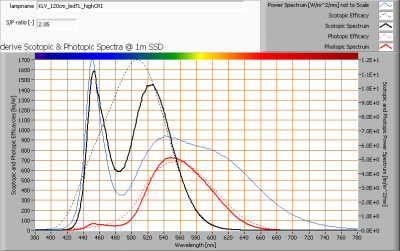
The power spectrum, sensitivity curves and resulting scotopic and photopic spectra (spectra energy content defined at 1 m distance).
The S/P ratio is 2.1.
More info on S/P ratio can be found on the OliNo website.
Chromaticity diagram
The chromaticity space and the position of the lamp’s color coordinates in it.
The light coming from this lamp is close at the Planckian Locus (the black path in the graph).
Its coordinates are x=0.3293 and y=0.3423.
Color Rendering Index (CRI) or also Ra
Herewith the image showing the CRI as well as how well different colors are represented (rendered). The higher the number, the better the resemblance with the color when a black body radiator would have been used (the sun, or an incandescent lamp). Practical information and also some critics about the CRI can be found on the OliNo website.
Each color has an index Rx, and the first 8 indexes (R1 .. R8) are averaged to compute the Ra which is equivalent to the CRI.
CRI of the light of this lightbulb.
The value of 84 is higher than 80 which is considered a minimum value for indoor usage.
Note: the chromaticity difference is 0.0011 indicates the distance to the Planckian Locus. There is no norm yet that states what the max deviation from white light is allowed to be.
Voltage dependency
The dependency of a number of lamp parameters on the lamp voltage is determined. For this, the lamp voltage has been varied and its effect on the following light bulb parameters measured: illuminance E_v [lx], the lamppower P [W], the (Correlated) Color Temperature [K] and the luminous efficacy [Lm/W].
Lamp voltage dependencies of certain light bulb parameters, where the value at 230 V is taken as 100 %.
The illuminance and consumed power do not (significantly) vary when the voltage is varied, in a linear matter.
When the voltage at 230 V varies with + and – 5 V, then the illuminance varies < 0.1 %, so when abrupt voltage changes occur this effect is not visible in the illuminance output.
Warm up effects
After switch on of a cold lamp, the effect of heating up of the lamp is measured on illuminance E_v [lx], color temperature CT or correlated color temperature CCT [K], the lamppower P [W] and the luminous efficacy [lm/W].
Effect of warming up on different light bulb parameters. At top the 100 % level is put at begin, and at bottom at the end.
The warm up time is about 20 minutes. During that time the illuminance decreases 7 % and the consumed power with 2 %.
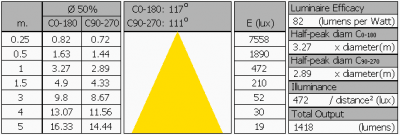
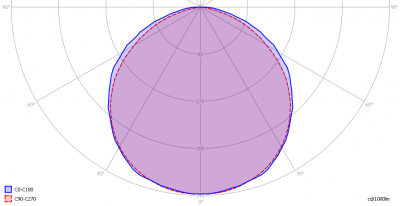
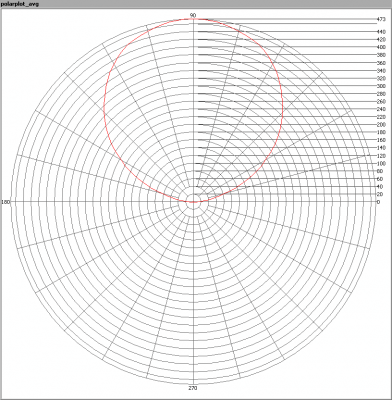
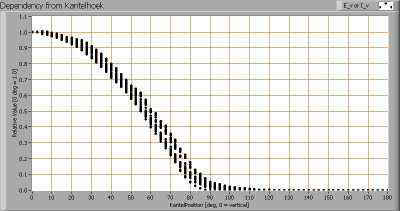
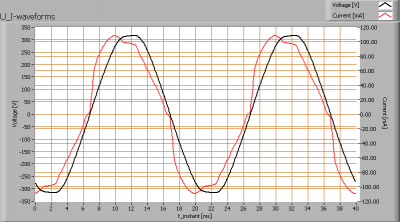
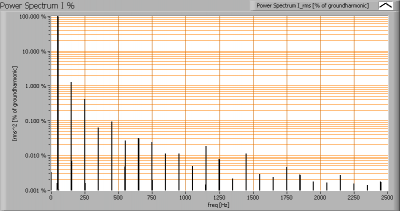
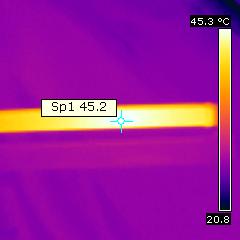
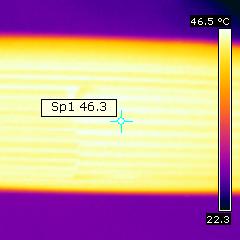
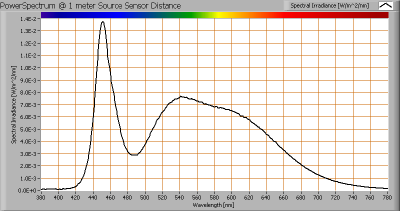
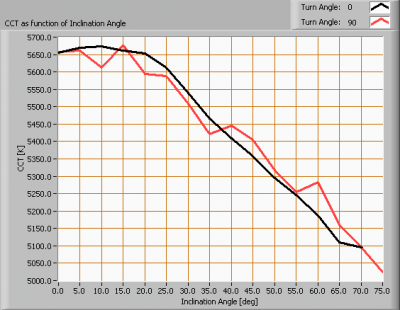
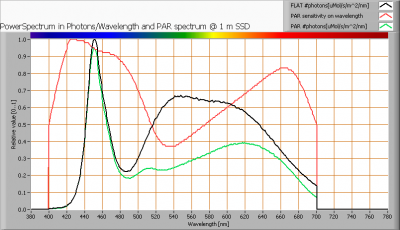
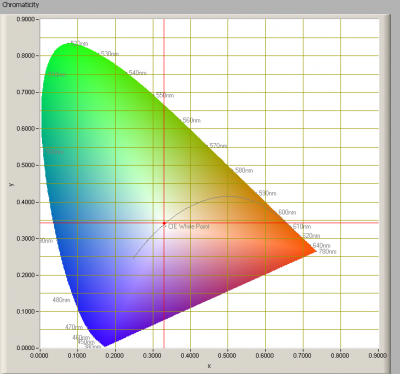
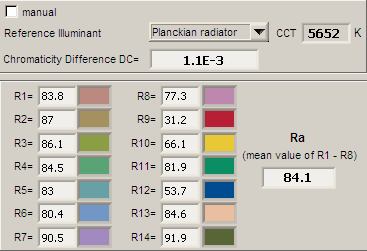
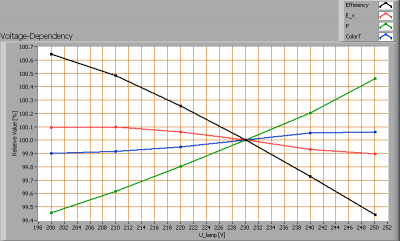
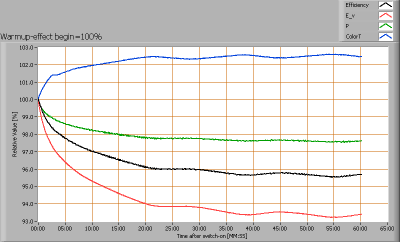
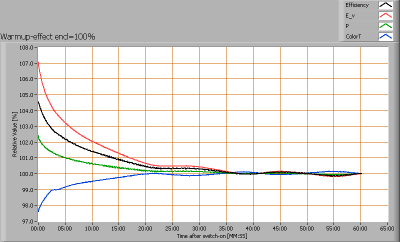



Most popular posts